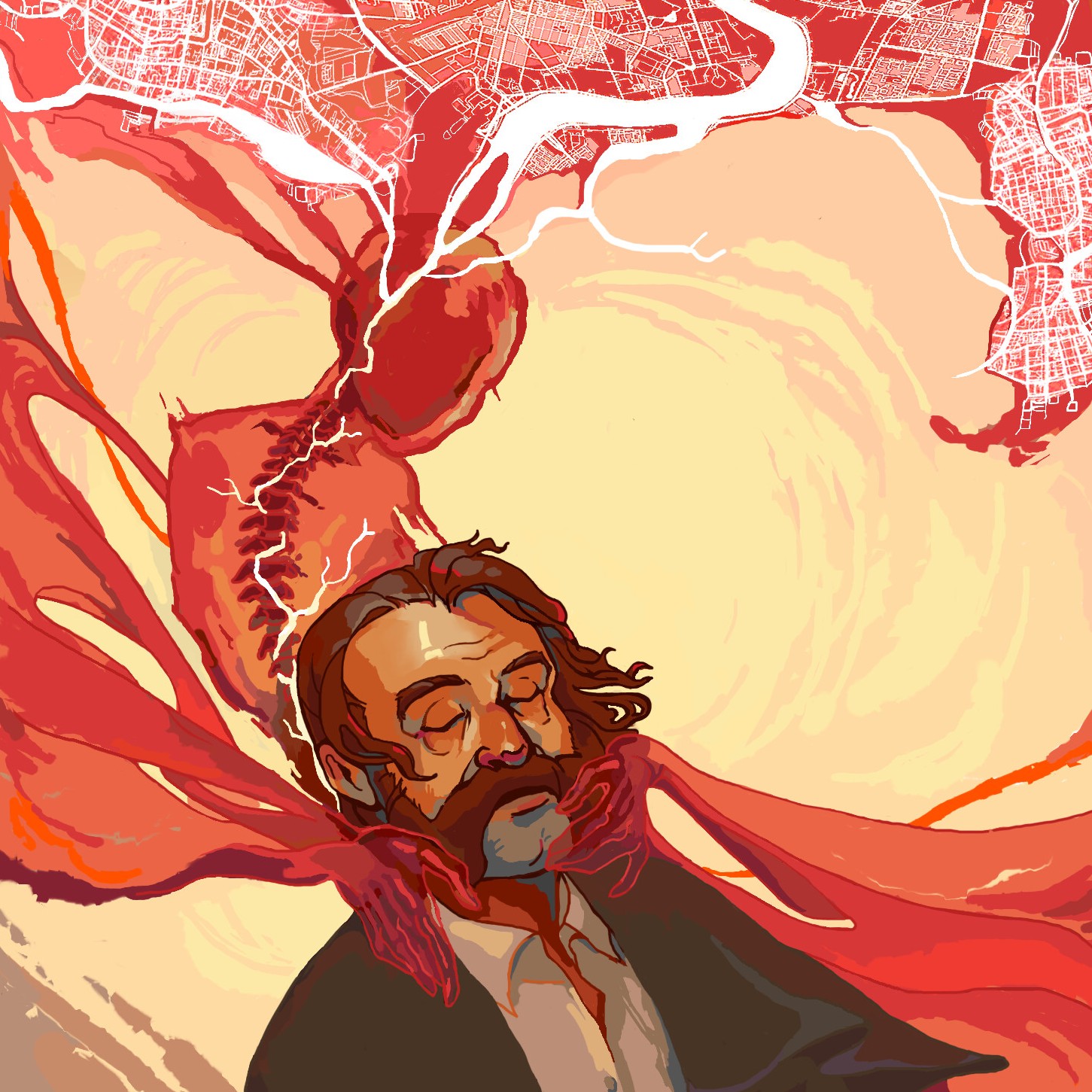vehicles over 5000 lbs should pay a tax, which should be used to upgrade infrastructure. This tax would likely be very steep.
No, because rich assholes who drive these guided missiles would just pay the tax and continue to put us all at risk.
They should be banned, unless required for work… while at work… with proof that this work requires such a large vehicle to be used.
deleted by creator
Yes, a large vehicle licence/training should be mandatory for those who can prove they need to drive such a large vehicle. I think the days of SUVs being “cute” family vehicles is long gone. Now, they are just M1 Abrams’ that just happen to have rubber tires and go fast.
I have to drive a pickup for work, why should I have a very steep tax for helping to build and fix your housing?
Can’t tell if /s or not… Infrastructure isn’t housing, it’s roads, bridges, etc
Great, but the question stands, why should I be penelized for needing a vehicle that fixes and builds your housing?
deleted by creator
Why should work vehicles be harder to use and get higher taxes?
deleted by creator
Gas tax does that.
Great question.
The better pitch is to consider the “tax” like an additional permit with increased costs, including mandatory more expensive insurance. It’s the cost of doing business, wrapped into your overhead. The disparity between the large pickups and the smaller sedans of yesteryear are staggering; imagine if you could buy and operate a semi truck with the same costs and licensing as a sedan. Trailers parked in front of your house completely obscuring the street, or taking up extra spots at the grocery store. People who don’t know the size of their vehicle knocking over signs and mailboxes. More roadkill, dead pets, and pedestrian fatalities because there are so many blind spots for such a big truck.
Obviously, pickups and semis are still quite different in size, but the point is that pickups and large SUVs are now so much bigger than sedans–bigger than what we built our streets and bridges for–that they present additional danger.
- Larger vehicles cause more wear and tear on the road just by driving on them
- collisions and accidents are more destructive and fatal due to the more deadly shape and weight
- blind spots are bigger, making the vehicle more dangerous for anyone outside of it
- effects of distracted driving are compounded
- irresponsible drivers get to drive these larger vehicles without any additional barrier to entry
In short: these machines can be used to perform specific tasks, but they are not the same size, shape, or weight of our lived environment. Additional regulation is needed to offset the real effects on people and infrastructure (e.g., more difficult licensing, higher registration fees, higher tolls, etc.).
Everything you mention should be accounted for by higher insurance and the gas tax.
I think what we are running into is the conflict between freedom vs safety. I think it will get more apparent as people are not able to afford things that we have reached the point where we have too much regulation and things will get too expensive for people to afford.
Nah. People can’t drive a bus or a semi without a CDL. It’s not hard to get, sure, but you still have to go through at least some training and weeding out process, because those vehicles are more dangerous than a car. Bigger SUVs are now reaching that point, particularly if standard safety infrastructure is not designed for them. Once you hit that point, any person’s freedom to drive it is outweighed by the freedom of everyone else to not be threatened by it. We can either redo every damn road in America, while also accepting much higher death rates, or we can limit these larger vehicles. Pretty obvious what the better option is.
deleted by creator
I’m not quite sure what you mean by “regulation”. Increasing the cost, such as by mandating higher and more comprehensive insurance, or instituting a gas tax are both regulatory measures.
Why should you AS a member of society contribute to its betterment? You must know that driving over potholes with a pickup truck full of Materials and equipment tends to have negative consequences
The gas tax should about pay for the potholes. But do you really think the cost of filling potholes is that much relative to the size of the government?
deleted by creator
@LovesTha @CableMonster @DriftinGrifter Okay, let’s break this one down a little bit:
- The typical size and weight of pickup trucks has increased massively since the '90s:
“Since 1990, U.S. pickup trucks have added almost 1,300 pounds on average. Some of the biggest vehicles on the market now weigh almost 7,000 pounds — or about three Honda Civics.”
https://www.bloomberg.com/news/articles/2021-03-11/the-dangerous-rise-of-the-supersized-pickup-truck
“Moreover, pickups’ weight increased by 32% between 1990 and 2021 … In the 1980s, about half of pickup trucks were categorized as small or midsize. But by the 2010s, small pickups had nearly vanished as Americans increasingly bought into the big truck lifestyle.”
https://www.axios.com/2023/01/23/pickup-trucks-f150-size-weight-safety
- Pick-ups are also larger than their '90s counterparts:
“A [Consumer Reports] analysis of industry data shows that the hood height of passenger trucks has increased by an average of at least 11 percent since 2000 and that new pickups grew 24 percent heavier on average from 2000 to 2018. On some heavy-duty trucks, such as the Ford F-250, the front edge of the hood is now 55 inches or more off the ground—as tall as the roof of some sedans.”
https://www.consumerreports.org/car-safety/the-hidden-dangers-of-big-trucks/
- Paradoxically, pick up trucks made before the '90s had more capacity for transporting construction supplies and equipment than their new counterparts:
"As pickups transitioned from workhorses to lifestyle vehicles, their design shifted accordingly: Cabs expanded to accommodate more passengers, while beds shrank.
“The first generation of F-150s was 36% cab and 64% bed by length. By 2021, the ratio flipped, with 63% cab and 37% bed.”
https://www.axios.com/2023/01/23/pickup-trucks-f150-size-weight-safety
- Each time you double the weight of a vehicle, you cause roughly 16 times as much pavement damage:
“The generalized fourth-power law explains why road damage is disproportionately inflicted by the heftiest vehicles. Developed after extensive federal roadway testing during the 1950s, the law is a rule of thumb showing that roadway stress caused by two vehicles is a function of their relative weight per axle scaled to the fourth power. As a result, a single 80,000-pound auto hauler with five axles can cause around 4,000 times the destruction of a two-ton car.”
https://slate.com/business/2023/06/electric-vehicles-auto-haulers-weight-capacity-roads.html
-
In Australia, main roads are generally funded by federal and state governments through a mix of fuel excise and consolidated revenue. Local streets, which account for most of the road network, are funded by local councils through rates.
-
Despite the added cost, receive several tax breaks under Australia’s tax code.
"Temporary Full Expensing allowed for vehicles to be claimed as an immediate, one-off tax deductible expense, and while that deduction was capped at $60,000 for passenger vehicles, there was no limit for vehicles that can carry at least a tonne.
“And the Loss Carry Back tax offset allows a business to claim the purchase of a new vehicle against the previous year’s profits if that vehicle creates a net loss for the business.”
(1/3)
deleted by creator
@CableMonster @anothercatgirl
Just out of curiosity, what sort of truck do you drive?Just a standard 1 ton pickup.
that’s a quarter of the size of the vehicle in the headline though
So not a 7000lb+ EV then?
@Rediphile @CableMonster
Yes those too!
There is probably some scientific way to do this. Measure the impact on roads, society, other road users and the environment. and tax the vehicles with the worst impact more.The entire article is about an EV truck specifically.
No, just standard fuel. Are you guys against EVs now?
This whole thread started because someone mentioned the idea of taxing vehicles over 5000lbs, which a normal gas f150 is not. So this hypothetical tax probably wouldn’t apply to your work truck.
And yeah, I also was poking fun at the people giving you shit because they are accidentally showing implied support for combustion engines.
And I’m having a giggle in general about how often people don’t read the article or get sidetracked from what is actually even being talked about.
@CableMonster
Thanks.
You can probably see where I am going with this.
There is a big difference between a smaller practice work truck and a giant monster truck.
The aim of any taxes should be to discourage certain trucks and encourage others.
IMO, you should be exempt. The vast majority of jobs don’t require a truck, yet the F150 is the most-sold vehicle in the US. So you’re in the minority.
I mean you kinda have a point. There absolutely are smaller, safer vehicles that would fit your needs. But unfortunately those aren’t available in a lot of places (like the US).
I’d be down for a large vehicle tax, but you would need a way for people who genuinely need a truck to have it waived.
Why should I have to subsidize your oversized work vehicle and the extra wear and tear it causes our infrastructure?
Drive a van. Drive a truck that is reasonably sized and designed for human work (like are used in many countries around the world). Pickups don’t have to be built on frames sized for semis.
Gas Tax covers the damage.
And you dont understand the needs of people that do work on housing, you can tow a significant trailer or haul heavy things with a van or small pickup. A half ton pickup is not useful for real work.
Excuses.
If you dont know what you are talking about then dont be a critique. Do some hard work and then you will get it.
I do get it. You have no reasonable excuse to drive a multi-ton pickup that’s tall enough that you can’t see people standing in front of it. There are alternatives or it’s not needed as a daily driver. How is it that the rest of the world manages to accomplish the same things with smaller vehicles?
Keep trying to justify it to yourself or just own the fact that it’s ostentatious and ridiculous.
I literally had a smaller vehicle before, and it didnt work. Again, do some real work so you actually understand what is needed and not needed.
Video:
like a knife through butter
“The problem is that thousands of miles of guardrails installed alongside American highways were designed decades ago”
Ah, yes, that is the problem. Cars becoming heavier with little to no added value are not the problem, its the guardrails and not enough tax dollars being spent.
Jesus Christ! Reminds me of those videos where bunker busters smoothly glide through thick concrete walls.
Removed by mod
Sounds like a self correcting problem? Maybe just replace the ones that protect traffic below them…








